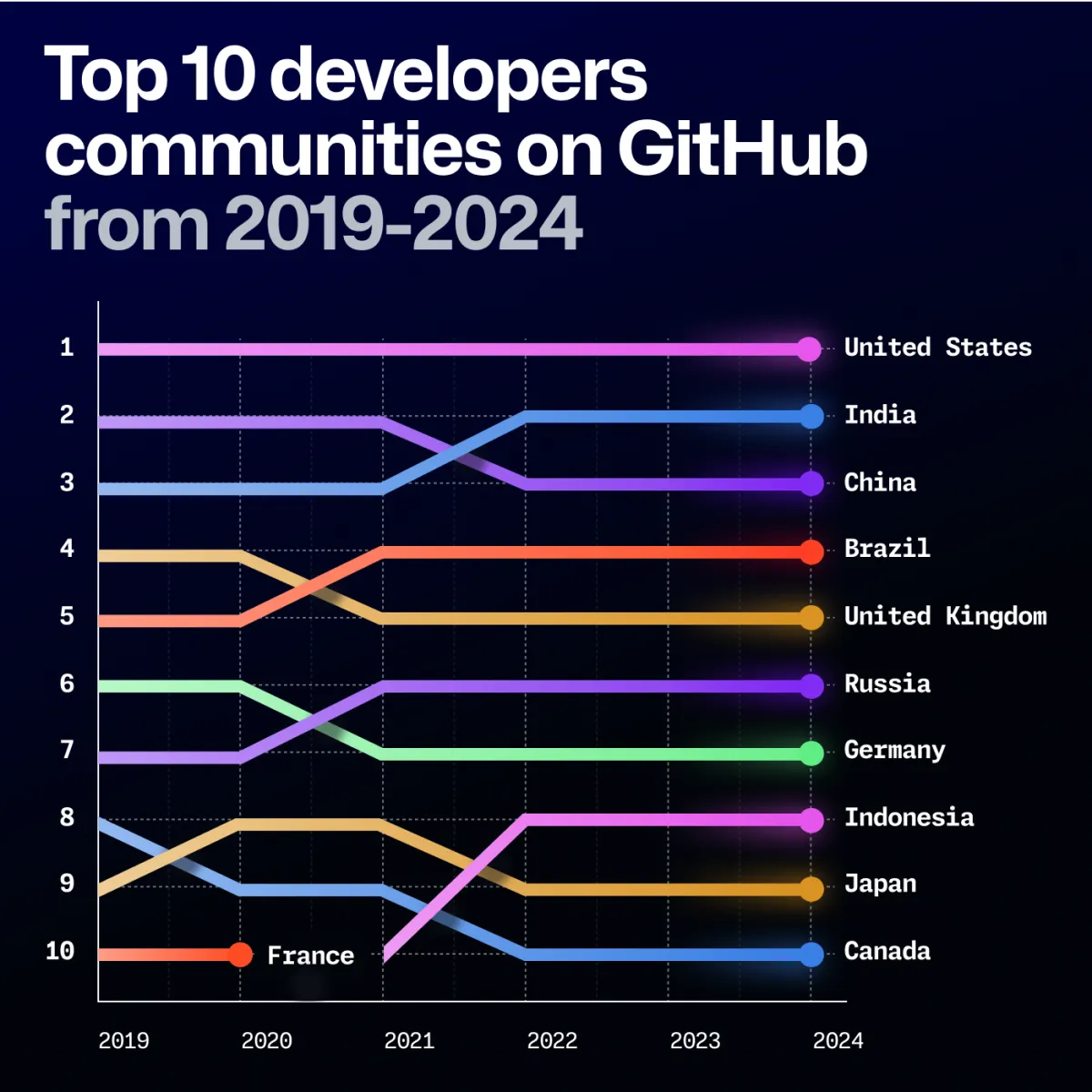You might think AI is coming for developers’ jobs—after all, AWS CEO Matt Garman predicted most developers won’t be coding within two years, and former Stability AI CEO Emad Mostaque gives programmers just five years.
But GitHub’s latest data tells a strikingly different story.
According to a recent report, developer activity hit unprecedented levels in 2024. Total projects on GitHub grew 25% year-over-year to 518 million, while contributions reached 5.2 billion.
More than one million open-source maintainers, students, and teachers now use GitHub Copilot at no cost.
“Our data also shows a lot more people are joining the global developer community,” Github’s report reads. “In the past year, more developers joined GitHub and engaged with open-source and public projects (in some cases, empowered by AI),”
The advent of AI is accelerating, not replacing, development, at least not right now.
The report shows developers created over 70,000 new generative AI projects in 2024, a 98% year-over-year increase. Public generative AI projects like home-assistant/core and Ollama (generative text) are drawing significant contributions, especially from newcomers.
This shift toward open-source AI development, rather than closed proprietary systems, is also critical to the evolution of AI technology.
The trend shows that AI development is becoming more transparent and collaborative rather than concentrated in a few large companies. This matters because open-source AI projects allow for public scrutiny of models, enable faster innovation through community contributions, and democratize access to AI technology—particularly crucial for developers in emerging markets who might otherwise be priced out of working with cutting-edge AI tools.
Python’s rise to the top spot over JavaScript marks a historic shift—the first such change since 2014.
This may not mean a lot by itself, but Python has gained significant traction, especially in fields like data science and machine learning. In contrast, Javascript is essential in areas like web development, so an increase in usage to the point of becoming the most popular language, may point to developers finding AI more profitable or attractive than working on web projects.
Notably, Jupyter Notebooks—open-source computing environments for users to run AI models and other programs—also increased in popularity this year.

The transformation is global. India’s developer community is snowballing, and it’s projected to overtake the U.S. as the largest on GitHub by 2028. Notable growth occurred in regions outside North America and Europe, with Brazil, India, and Nigeria showing particularly strong momentum.
India saw a 95% increase in year-over-year contributions to generative AI projects, while France experienced a 70% boost. Emerging tech hubs like the Netherlands (291%), Ethiopia (242%), and Costa Rica (171%) showed major growth in AI project contributions.

But, if the report shows an exciting outlook, why are developers and other tech workers still wary about this technology?
The rapid adoption of AI, highlighted by McKinsey’s latest global study reporting a 72% AI adoption rate, may help understand the mixed feelings in the tech community.
Developers are concerned about being edged out by tools that simplify coding and automate repetitive tasks, and seeing how AI projects like those on GitHub’s platform grow; it’s easy to understand how fears of role displacement simmer beneath the excitement.
Elon Musk is also aware of these concerns, predicting an existential “crisis of meaning” as AI becomes capable of performing human jobs “better” than humans.
Speaking at the 2024 All-In Summit, Musk underscored a future where traditional roles may disappear, pushing humanity to redefine purpose in a world where tasks can be performed by AI.
Workers across industries are taking proactive steps to protect themselves as AI reshapes job roles. Many are turning to unions and collective bargaining to ensure safeguards are in place, as seen in the entertainment industry, where unions like SAG-AFTRA have pushed back against unchecked AI use in creative fields.
There’s also a surge in demand for “AI literacy” training programs, which aim to help workers across sectors understand and work alongside AI tools rather than be replaced by them.
While concerns are valid—the World Economic Forum estimates that AI will wipe 85 million jobs out of existence—GitHub’s data suggests that the dystopian AI-powered future is not upon us yet, and instead of replacing developers, AI appears to be empowering them to shape the future of tech on their own terms.
Edited by Sebastian Sinclair and Josh Quittner

